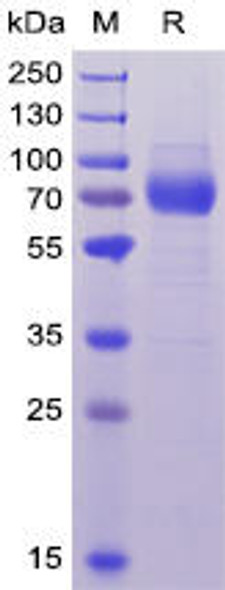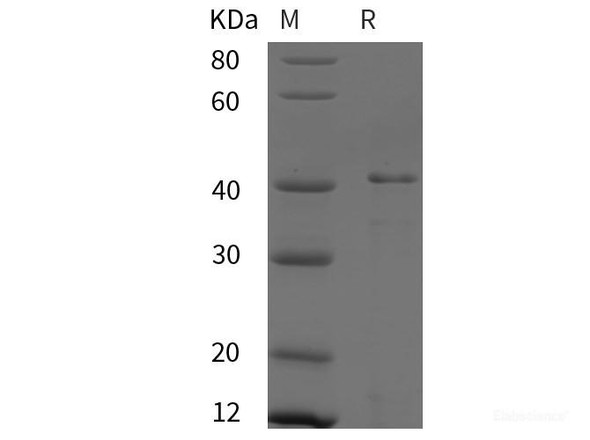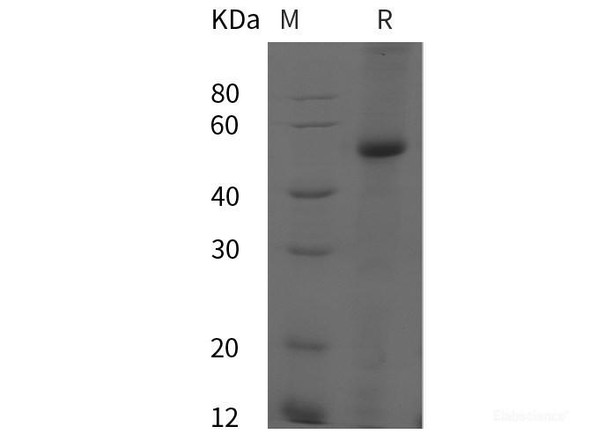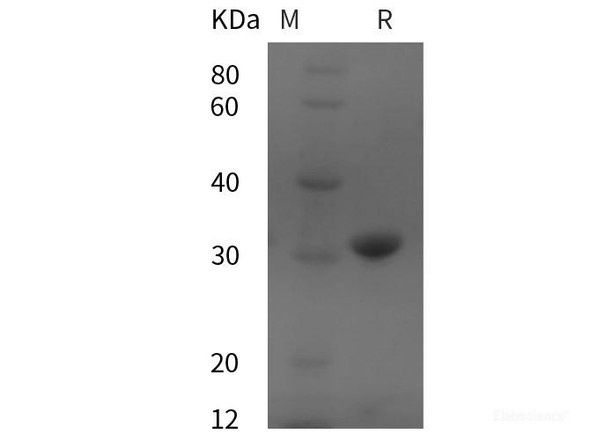| Sequence: | Met1-His259 |
| Accession: | P20138 |
| Storage: | Generally, lyophilized proteins are stable for up to 12 months when stored at -20 to -80°C. Reconstituted protein solution can be stored at 4-8°C for 2-7 days. Aliquots of reconstituted samples are stable at < -20°C for 3 months. |
| Shipping: | This product is provided as lyophilized powder which is shipped with ice packs. |
| Formulation: | Lyophilized from sterile PBS, pH 7.4. Normally 5 % - 8 % trehalose, mannitol and 0.01% Tween80 are added as protectants before lyophilization. Please refer to the specific buffer information in the printed manual. |
| Reconstitution: | Please refer to the printed manual for detailed information. |
| Background: | Myeloid cell surface antigen CD33 also known as Sialic acid binding Ig-like lectin 3, CD33 antigen or Siglec-3, is a member of the immunoglobulin superfamily and SIGLEC (sialic acid binding Ig-like lectin) family. This Single-pass type I membrane protein contains 1 Ig-like C2-type (immunoglobulin-like) domain and 1 Ig-like V-type (immunoglobulin-like) domain. CD33 /Siglec-3 is a putative adhesion molecule of myelomonocytic-derived cells that mediates sialic-acid dependent binding to cells. CD33 /Siglec-3 preferentially binds to alpha-2,6-linked sialic acid. The sialic acid recognition site may be masked by cis interactions with sialic acids on the same cell surface. In the immune response, may act as an inhibitory receptor upon ligand induced tyrosine phosphorylation by recruiting cytoplasmic phosphatase(s) via their SH2 domain(s) that block signal transduction through dephosphorylation of signaling molecules. CD33/Siglec-3 induces apoptosis in acute myeloid leukemia (in vitro). CD33/Siglec-3 can function as a sialic acid-dependent cell adhesion molecule and that binding can be modulated by endogenous sialoglycoconjugates when CD33 is expressed in a plasma membrane. |










